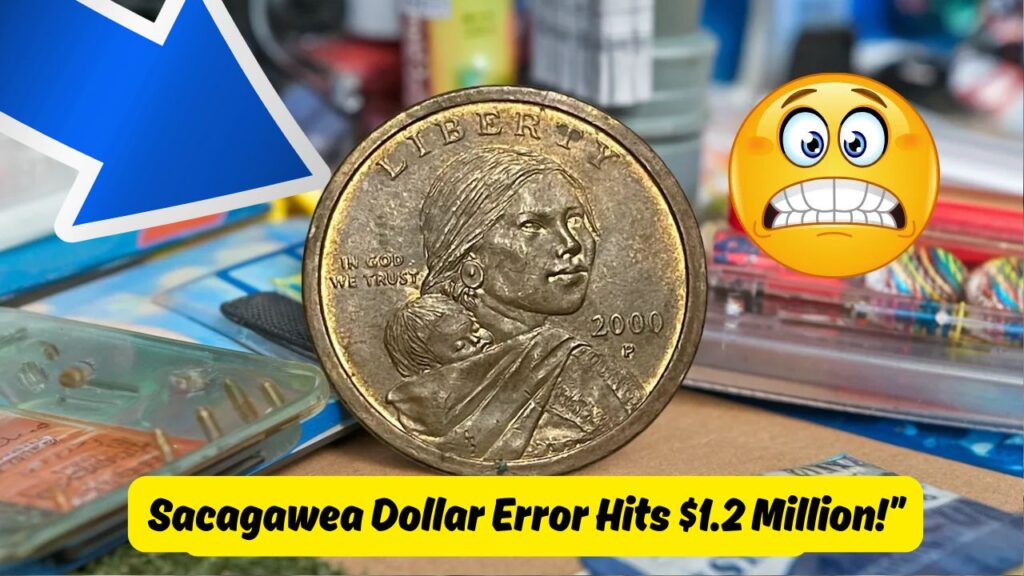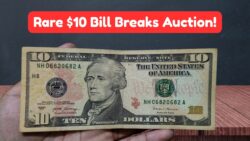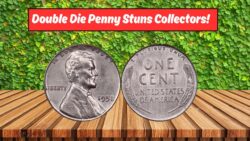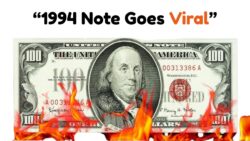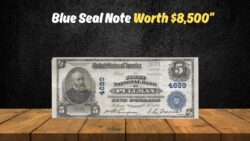$1 Sacagawea Dollar – In a world where pocket change is often overlooked, a rare $1 Sacagawea Dollar coin has stunned collectors and casual holders alike by reaching a jaw-dropping value of $1.2 million. What makes this coin special? How did it go from a regular-looking dollar to a millionaire’s collectible? This article uncovers everything you need to know about the now-legendary 2000 Sacagawea Dollar that was once mistaken for an ordinary token.
The Story Behind the $1.2 Million Sacagawea Dollar
Initially released in 2000 by the U.S. Mint, the Sacagawea Dollar was part of a new initiative to promote the use of dollar coins. Featuring the iconic Native American guide Sacagawea on the obverse, it was a beautiful but commonly circulated coin. However, a small batch of these dollars became extremely rare due to a major minting anomaly.
- In 2000, a small number of Sacagawea Dollars were mistakenly struck using the reverse die of a state quarter.
- These rare coins are known as “mule errors” – a coin with mismatched obverse and reverse sides.
- Only around 12 known examples of this error coin exist today.
- One such coin sold at auction for $1.2 million, making it one of the most valuable modern U.S. coins.
This extremely rare combination turned what looked like an everyday coin into a historical treasure worth more than a luxury car or even a house.
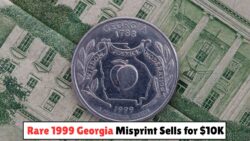 This 1999 Georgia Quarter With Misprint Just Hit $10,000 at Auction – Still in Circulation!
This 1999 Georgia Quarter With Misprint Just Hit $10,000 at Auction – Still in Circulation!
Key Details of the Rare Sacagawea Mule Error Coin
This table outlines the specific characteristics that set this coin apart from standard Sacagawea Dollars.
| Feature | Details |
|---|---|
| Year | 2000 |
| Obverse (Front) | Sacagawea with child |
| Reverse (Back) | State Quarter Eagle (meant for Washington Quarter) |
| Metal Composition | Manganese-Brass clad |
| Diameter | 26.5 mm |
| Mint Error Type | Mule Error (mismatched dies) |
| Estimated Value | $500,000 to $1.2 million |
| Total Known Examples | Only 12 discovered as of today |
How to Identify a Sacagawea Dollar Worth $1.2 Million
Worried you might have missed a fortune in your coin jar? Here are steps to spot this golden mistake.
- Check the Year: It must be a 2000 Sacagawea Dollar.
- Inspect the Reverse Side: Instead of the flying eagle, look for the eagle from the Washington quarter.
- Listen for the Ring: Because it uses a quarter reverse die, the ring and metal may sound different when dropped.
- Examine the Edge: The edge should match the typical Sacagawea Dollar, not a quarter.
- Use a Magnifier: A coin loupe helps in spotting mismatched design features.
- Seek Professional Help: If you suspect a mule error, contact coin grading services like PCGS or NGC.
Other Valuable Sacagawea Dollar Coin Varieties
Besides the famous mule error, there are other variants that can fetch serious cash:
| Variant Name | Description | Value Range |
|---|---|---|
| Cheerios Dollar | Specially struck for General Mills promo | $2,500 – $7,000 |
| 2000-P Wounded Eagle | Obverse die gouge across eagle’s belly | $300 – $700 |
| Proof Versions | Made for collectors with shiny mirror-like finish | $20 – $80 |
| Enhanced Uncirculated (2015-2021) | Sold in limited collector sets | $15 – $100+ |
| Missing Edge Lettering (2007) | Minting error without edge text | $50 – $250 |
| 2009 Native American Reverse | Special series for Native American contributions | $10 – $50 |
| Presidential Dollar Mule Errors | Rare mismatched die combinations | $500 – $1,500 |
Where and How to Sell Your Rare Sacagawea Dollar Coin
If you suspect that you have one of these rare coins, here’s how you can sell it for the best price:
Steps to Sell:
- Authenticate: Send your coin to a grading service like PCGS or NGC for authentication.
- Auction Houses: Consider top-tier auctioneers like Heritage Auctions or Stack’s Bowers.
- Online Marketplaces: eBay or numismatic websites may be an option, but caution is needed.
- Dealers: Trusted local coin dealers or collectors’ clubs may offer quick appraisals.
- Avoid Pawn Shops: These rarely offer true market value for rare coins.
Selling Tip:
Before listing or selling your coin, gather all authentication documents and maintain high-quality photos of both sides.
Tips to Avoid Selling Your Rare Coin for Cheap
Many people unknowingly spend or sell rare coins for just $1. Here’s how to avoid that costly mistake:
- Don’t Assume All $1 Coins Are Equal: Look closely at the design, year, and edge.
- Check with a Collector: A coin enthusiast may immediately spot a rarity.
- Keep Unusual Coins Separate: If something feels different or heavier, save it.
- Compare with Online Images: Look at known examples of the mule coin.
- Use Coin Identification Apps: Tools like CoinSnap or PCGS CoinFacts help beginners.
With only a dozen known to exist, the $1.2 million Sacagawea Mule Error is the rarest of the rare. But mistakes happen—and coins like these can wind up in everyday circulation. Before you toss that golden dollar back into the vending machine, take a moment to inspect it. That single coin could be your unexpected ticket to fortune.
FAQs of $1 Sacagawea Dollar
Q1. What is the $1.2 million Sacagawea coin called?
It’s called the “Sacagawea Dollar Mule Error” coin.
Q2. How many of these mule coins exist?
Only 12 are known to exist as of today.
Q3. Where can I get my coin checked?
Submit it to professional graders like PCGS or NGC for authentication.
Q4. Can I find one of these coins in pocket change?
Yes, some have been found in circulation mistakenly.
Q5. What should I do if I have one?
Get it authenticated and sell it through a major auction house for best value.

